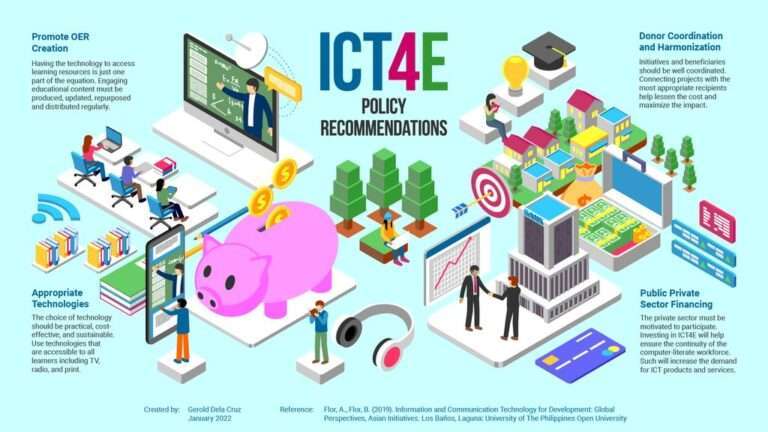What is a Mobile Content Strategy?
Overview
What is a mobile content strategy?
A mobile content strategy is a comprehensive plan that outlines how to create, distribute, and optimize content specifically for mobile devices. It involves understanding the unique characteristics and limitations of mobile platforms and tailoring content to provide a seamless and engaging user experience. A mobile content strategy takes into account factors such as responsive design, mobile search optimization, and interactive content creation. It aims to reach and engage mobile users effectively, considering their preferences and behaviors. By implementing a mobile content strategy, businesses can enhance their online presence, increase user engagement, and drive conversions. To learn more about developing a mobile content strategy, visit Unifire.
Why is a mobile content strategy important?
In today’s digital age, having a mobile content strategy is crucial for businesses to stay competitive and reach their target audience effectively. With the increasing use of smartphones and tablets, people are consuming content on mobile devices more than ever before. A mobile content strategy ensures that your content is optimized for mobile devices, providing a seamless and enjoyable user experience. It allows you to adapt your content to the unique characteristics of mobile platforms, such as smaller screens and touch interactions. By implementing a mobile content strategy, you can enhance user engagement, increase brand visibility, and drive conversions. It enables you to create engaging and interactive content that captures the attention of mobile users and keeps them coming back for more. To succeed in the mobile landscape, businesses need to prioritize the development of a comprehensive mobile content strategy.
Benefits of implementing a mobile content strategy
Implementing a mobile content strategy offers numerous benefits for businesses. By optimizing content for mobile devices, companies can reach a larger audience and increase engagement. Mobile content marketing best practices can help businesses increase organic website traffic and dominate their social niche. Additionally, a mobile content strategy allows businesses to engage customers through new channels, such as webinars, podcasts, and workshops, which have significant SEO potential. Furthermore, businesses can develop thought leadership by repurposing long-form content into e-books or reports. By implementing a mobile content strategy, companies can become more efficient and save time on manual tasks. To take advantage of these benefits and streamline your content creation process, consider using Unifire, a platform that helps you upload and optimize content for mobile devices. With Unifire, you can easily add new channels, engage your audience, and fill your sales machine with valuable content.
Planning
Identifying target audience
After understanding the importance of developing a mobile content strategy, the next step is to identify your target audience. This involves conducting thorough market research to gain insights into the demographics, behaviors, and preferences of your potential mobile users. By understanding who your target audience is, you can tailor your content to meet their specific needs and interests. This can be done through creating buyer personas, which are fictional representations of your ideal customers. These personas can help guide your content creation process and ensure that you are delivering the right message to the right people at the right time. By taking the time to identify your target audience, you can develop a more effective mobile content strategy that resonates with your intended audience and drives engagement and conversions.
Defining goals and objectives
Once you have identified your target audience, the next step in developing a mobile content strategy is to define your goals and objectives. This is a crucial step as it sets the direction for your content efforts and helps you measure success. Your goals could include increasing brand awareness, driving website traffic, or generating leads. Objectives, on the other hand, should be specific, measurable, achievable, relevant, and time-bound (SMART). For example, an objective could be to increase website traffic by 20% within the next three months. By clearly defining your goals and objectives, you can align your content creation efforts and ensure that they are focused and effective. Remember, a well-defined content strategy is key to achieving your desired outcomes. After defining your goals and objectives, it’s time to create a content calendar to plan and organize your content creation and distribution schedule. A content calendar helps you stay consistent, ensures that you cover a variety of topics, and allows for strategic planning around important events or holidays. With a well-planned content calendar, you can optimize your mobile content strategy and engage your target audience effectively. To learn more about developing a mobile content strategy and how Unifire can help you streamline your content creation process, visit Unifire.
Creating a content calendar
Once you have identified your target audience and defined your goals and objectives, the next step in developing a mobile content strategy is creating a content calendar. A content calendar is a schedule that outlines the topics, formats, and publishing dates for your mobile content. It helps you stay organized and ensures a consistent flow of content to engage your audience. When creating a content calendar, consider the different content platforms you will be using, such as social media, blogs, and newsletters. Content platforms play a crucial role in reaching your target audience and delivering your message effectively. By mapping out your content in advance, you can ensure that you are delivering the right content to the right platforms at the right time. This strategic approach will maximize the impact of your mobile content and help you achieve your goals.
Content Creation
Adapting content for mobile devices
In today’s digital age, mobile devices have become the primary means of accessing information and consuming content. As a result, it is crucial for businesses to adapt their content for mobile devices to ensure a seamless user experience. Organizing keywords and structuring content in a way that is easily scannable and digestible on smaller screens is essential. This includes using shorter paragraphs, bullet points, and subheadings to break up the text. Additionally, optimizing images and videos for mobile viewing and ensuring fast loading times are important factors in mobile content adaptation. By prioritizing mobile-friendly content, businesses can effectively engage their mobile audience and stay ahead in the competitive digital landscape.
Optimizing for mobile search
When it comes to developing a mobile content strategy, optimizing for mobile search is a crucial aspect. With the increasing number of people using their mobile devices to search for information, it is essential to ensure that your content is easily discoverable and ranks well in mobile search results. To optimize for mobile search, you need to focus on several key factors:
- Mobile-friendly website: Ensure that your website is mobile-friendly and responsive, providing a seamless user experience across different devices.
- Keyword research: Conduct thorough keyword research to identify the relevant keywords and phrases that your target audience is searching for on mobile devices.
- Structured data: Implement structured data markup to provide search engines with additional information about your content, making it more likely to appear in rich snippets and featured snippets.
- Page load speed: Optimize your website’s load speed to improve user experience and increase the chances of your content ranking higher in mobile search results.
By optimizing for mobile search, you can increase your visibility, attract more organic traffic, and ultimately drive conversions. It is an essential component of a comprehensive mobile content strategy.
Creating engaging and interactive content
When it comes to creating engaging and interactive content for your mobile strategy, there are several key insights to keep in mind. First, it’s important to understand the preferences and behaviors of your target audience. By conducting research and gathering data, you can tailor your content to meet their needs and interests. Second, consider the different types of content that are most effective on mobile devices. This could include videos, interactive quizzes, or immersive storytelling experiences. Finally, don’t forget to optimize your content for mobile platforms and devices. This means ensuring that your content loads quickly, is easy to navigate, and provides a seamless user experience. By following these strategies, you can create content that not only engages your audience but also drives better user acquisition.
Measurement and Optimization
Tracking mobile content performance
Tracking the performance of your mobile content is crucial to understanding its effectiveness and making data-driven improvements. By analyzing metrics such as page views, bounce rate, and conversion rate, you can gain insights into how users are engaging with your content on mobile devices. This data can help you identify areas for optimization and make informed decisions about your mobile content strategy. Additionally, tracking user behavior and engagement can provide valuable insights into user preferences and interests, allowing you to tailor your content to better meet their needs. Implementing a device-agnostic content strategy is essential in ensuring that your content is accessible and optimized for a wide range of mobile devices. By creating content that is responsive and adaptable, you can provide a seamless user experience across different devices, enhancing engagement and driving conversions. To effectively track mobile content performance, it is important to use analytics tools and platforms that provide comprehensive data and actionable insights. By regularly monitoring and analyzing the performance of your mobile content, you can make data-driven improvements and optimize your strategy to maximize results.
Analyzing user behavior and engagement
Analyzing user behavior and engagement is a crucial step in developing a successful mobile content strategy. By understanding how users interact with your content, you can make data-driven improvements to optimize their experience. Key insights from analyzing user behavior include identifying popular content, determining the effectiveness of calls-to-action, and understanding user preferences and interests. This information can help you create more targeted and engaging content that resonates with your audience. Additionally, analyzing user engagement metrics such as click-through rates, time spent on page, and conversion rates can provide valuable insights into the effectiveness of your mobile content strategy. By continuously monitoring and analyzing user behavior and engagement, you can make informed decisions to optimize your strategy and drive better results.
CTA: Visit Unifire
To learn more about developing a mobile content strategy and optimizing user behavior and engagement, visit Unifire. Unifire offers a comprehensive suite of tools and resources to help you create, analyze, and optimize your mobile content strategy. With Unifire, you can track performance metrics, analyze user behavior, and make data-driven improvements to drive better results. Take your mobile content strategy to the next level with Unifire.
How to Analyze User Behavior and Engagement
- Set up analytics tools: Choose a reliable analytics tool such as Google Analytics or Mixpanel and integrate it into your mobile app or website.
- Define key metrics: Determine the metrics that are most relevant to your mobile content strategy, such as click-through rates, bounce rates, and conversion rates.
- Track user behavior: Use analytics tools to track user actions, such as page views, time spent on page, and interactions with specific elements.
- Analyze user data: Dive into the data collected by your analytics tool to identify patterns, trends, and insights about user behavior and engagement.
- Make data-driven improvements: Use the insights gained from analyzing user behavior to make informed decisions and optimize your mobile content strategy. Test different approaches, measure the impact, and iterate to continuously improve.
By following these steps and leveraging the power of data, you can gain valuable insights into user behavior and engagement to create a highly effective mobile content strategy.
Making data-driven improvements
After tracking the performance of your mobile content and analyzing user behavior and engagement, it is crucial to make data-driven improvements to optimize your strategy. Target audience plays a significant role in this process, as understanding their preferences and needs will help you tailor your content to better resonate with them. By leveraging the insights gained from data analysis, you can make informed decisions on how to enhance your mobile content strategy. Whether it’s adjusting the tone and style of your content or incorporating interactive elements, these improvements will contribute to a more engaging and impactful mobile experience for your audience.
Welcome to the Measurement and Optimization section of Unifire! Here, we provide valuable insights and strategies to help you measure and optimize your content effectively. Whether you’re a podcaster, blogger, or content creator, our tools and resources can assist you in extracting summaries, keywords, and titles from your podcast episodes and repurposing your content. With Unifire, you can save time and effort by automating the process of generating valuable content. Start optimizing your content today and experience the benefits of increased visibility and engagement. Visit Unifire now!









 العربية
العربية Čeština
Čeština Dansk
Dansk Nederlands
Nederlands English
English Suomi
Suomi Français
Français Deutsch
Deutsch Italiano
Italiano 日本語
日本語 한국어
한국어 Norsk bokmål
Norsk bokmål Polski
Polski Português
Português Русский
Русский Español
Español Svenska
Svenska